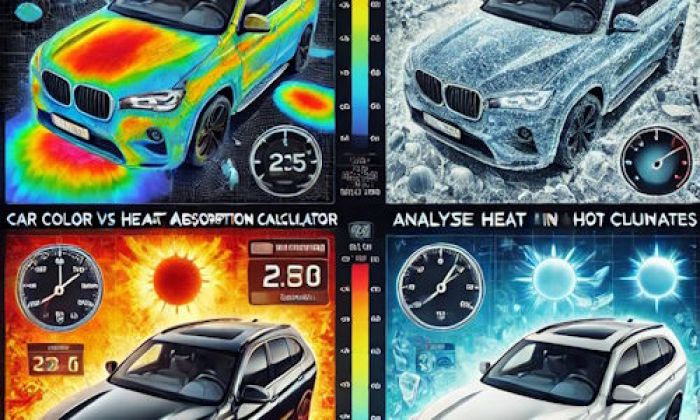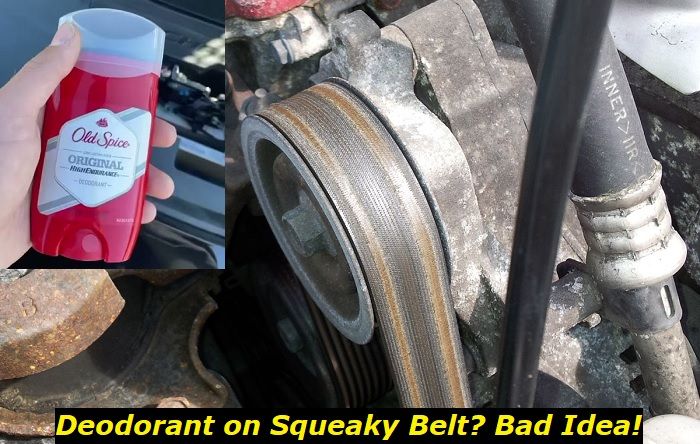Yamaha is one of the most famous Asian motorcycle companies in the world. Their motorcycles are one that you could say have revolutionized the industry. One of their productions is Yamaha Virago 535. While this product is one of the best in its category, it is not free of problems. Some of these problems that were encountered by real-time users are described in this article.
Although this motorcycle is no longer in production, it is still in circulation. The stylish design of the motorcycle is one of its many attractions. If you have this motorcycle or would like to purchase one, then you should make yourself familiar with the possible problems.
.jpg)
An Overview of Yamaha Virago 535
Manufactured by Yamaha, the Yamaha Virago 535 is one of the many in the Virago series. Its production was between 1987 and 2003 and it was the successor to the Yamaha Virago 500K. The motorcycle is also known as the Yamaha XV535 and was succeeded by Yamaha DragStar 650.
Over the years of its production, this motorcycle was subjected to various changes. Its production started in the US in 1987 and a year later in the UK. At the time of its production, Virago 535 had less competition and was sought after by many riders.
One of the compelling features of Virago 535 is its suitability for everyone and especially women. It is stylish, with low seats, easily maintained, and affordable. Being a cruiser bike, it earned its place as one of the best motorcycles in almost 20 years of production.
Yamaha Virago 535 Specifications
- Engine
The Yamaha's 38 hp peak power rating may not be much to get excited about, but the Virago 535's flexibility and beginner-friendliness make its engine and power delivery the show's star.
It is a specially designed, two-valve, air-cooled, 70-degree V-twin, SOHC that stands out for having a helpful, maintenance-free shaft drive in addition to having the right cruiser-like appearance.
While the powertrain's top-end performance isn't exactly thrilling, the XV535 could never be called as "quick," and you have to work it hard to attain peak speeds (that's not what cruising's about anyway), there is enough pull low down and strength in the intermediate to make day to day riding efficient and interesting.
It is five-geared, smooth, and simple to use but can be a little sluggish between the first and second gear. The shaft end drive, however, is another benefit because it requires minimal maintenance and isn't too hefty to detract from the Virago's perception of overall lightness.
- Reliability
The Yamaha XV535 Virago is a highly respected motorcycle both mechanically and in design. It has durability and prosperous sales numbers to show it. There aren't many complaints, but they do happen occasionally.
Carb icing and corroding regulator/rectifiers are two examples, with the latter occurring often on Japanese machines from this period. Additionally, there have been occasional complaints of top-end difficulties on bikes with higher mileage (40,000 miles or more, but they are, by the nature of the bike, quite uncommon in themselves).
Additionally, you must take into account the inescapable fact that the Virago 535 is now an outdated machine that, in many cases, would have been handled and mistreated by inexperienced riders over an extended period.
Although the paint, chrome, and metal finishes are typical Yamaha of the era and not particularly noteworthy, there is nothing particularly fundamentally wrong with the 535's build quality or dependability. On the other hand, the majority of examples are probably now, even if they have relatively low mileage, to have led a fairly hard, neglected life, so some corrosion, rust, and more should be expected.
Overall, though, almost all owner evaluations still describe the Yamaha XV535 Virago as a good motorbike and suggest that it is still a good used buy.
Because of its popularity and lengthy lifespan, there are still many used examples available, therefore there ought to be more than a few nice ones. To preserve the value of your "first big bike," keep the uncovered V-twin engine as well as the entire cruiser chrome in good shape. After all, you'll probably sell it after a few years.
- Design
The Yamaha Virago 535 is primarily a cruiser, and its chassis is, at least on paper, unremarkable and somewhat dated, consisting of a conventional tubular steel cradle frame, fairly spindly, fixed telescopic forks at the front, and quite basic dual shocks at the rear. Despite this, though, the bike's ride and handling are ideal for a beginner bike and are much better than most expectations.
The Virago 535 is slender owing to its engine positioning and low seat height, which somehow improves agility. The riding posture is on the upright side of lying back to give optimal comfort and control.
The Virago offers a relatively smooth ride, minimal weight, and light, accurate handling. Although the front end may get a little jittery above the engine's rev range, it is also reassuringly steady and predictable (within the confines of its very little performance at least).
Its low center of gravity and well-balanced design make it easier to maneuver at modest speeds, such as in a city or when weaving through traffic. The XV535 also boasts a respectable amount of ground clearance for a vehicle with a custom-style appearance.
As a lightweight, it weighs 182kg and has a seat height of 28.3 inches, which is low enough to accommodate all adult riders. Its maximum acceleration is 100mph, an engine capacity of 535cc, and average fuel consumption of 47mpg
Yamaha Virago 535 Problems
- Faulty Regulator
One of the problems associated with using Yamaha Virago 535 is the electrical problems that can be encountered. While this is not the only electrical issue, it is noteworthy. The regulator of an engine is responsible for maintaining the electrical flow in the engine.
Simply put, the regulator functions to maintain the current stability of an engine. Unlike vehicles that keep their batteries energized through the use of an alternator, motorcycles use miniature charging systems.
Hence, as the motorcycle gains speed, it is necessary to maintain the current flow as the stator dispenses more power. If this power output is not managed, it could result in a damaged battery. This is one of the problems associated with the use of the XV535. Having a bad regulator can affect the battery and this is a risk every XV535 user will have to take.
Some signs can show when the regulator of a motorcycle is faulty. Some of these signs include loss of acceleration power, rough idling, and sputtering in the engine.
- Bad Electrical connections
Another issue to worry about is the power issue, when using the XV535, this is one of the expected problems. The major way to ensure that the power is properly connected is to check the battery connector.
After a while, the connectors may become loose and not very attached causing the battery to be uncharged. In this case, the connections must be tightened and fitted properly.
However, before connecting the loosened wires, it is advised that the parts and units involved are properly cleaned. This is to prevent any further issues related to these connectors. Also, burnt connections can be detected this way and can quickly be replaced.
- Starter Malfunction
A bike starter is needed for operation and having a faulty starter can be a messy situation. Many operators of old Yamaha models have difficulties with this aspect of their motorcycles. Some cues can be noticed when there is a starter malfunction.
One of these is that the starter turns the bike on slowly and is not as effective as in previous times. When the starter becomes slower than usual, it is important to take notice of an impending fault with this unit.
Additionally, when the starter unit makes clicking noises, it can be a symptom of a fault in the unit. Sounds such as whirring, grinding, and buzzing are the common results of a faulty starter. Such noises show that the components of the starter are either defective or need repair.
Finally, the starter may slip and refuse to crank on the engine, when this happens even after repeated trials, there's a faulty starter. This unit is one of the problems that can be encountered during the normal use of the XV535.
- Small Fuel Tank
Say no to long road trips with this bike as it packs a limited fuel storage unit. Packed with a small 12L fuel tank, this cruiser is not suitable for long distanced trips. This tank can only offer the range of 100 miles requiring that the rider stop more often for a tank refill.
Although this is not a big deal for some users you would expect that a cruiser will have a bigger tank. While there are ways to solve this problem, it is still considered one of the problems to expect when using the Yamaha Virago 535.
- Limited Acceleration
If you're looking for a speed bike then this motorcycle is not the one you need. One of the problems with the XV535 despite all its upsides is the limited speed. As a cruiser, it does not produce enough power and has limited acceleration.
Even though this bike is extremely comfortable and reliable, the engine power output limits a lot of its functions.
Conclusion
The Yamaha Virago 535 has completely aged well and still holds the title as one of the revolutionary bikes of its time. With these responsibilities are other challenges that users may encounter during the use of the bike.
These problems as described above include starter malfunction, a small tank, electric issues, and a faulty regulator. These issues can be managed and reduced to a minimum with proper maintenance of the motorcycle.
About the authors
The CarAraC research team is composed of seasoned auto mechanics and automotive industry professionals, including individuals with advanced degrees and certifications in their field. Our team members boast prestigious credentials, reflecting their extensive knowledge and skills. These qualifications include: IMI: Institute of the Motor Industry, ASE-Certified Master Automobile Technicians; Coventry University, Graduate of MA in Automotive Journalism; Politecnico di Torino, Italy, MS Automotive Engineering; Ss. Cyril and Methodius University in Skopje, Mechanical University in Skopje; TOC Automotive College; DHA Suffa University, Department of Mechanical Engineering






Add comment